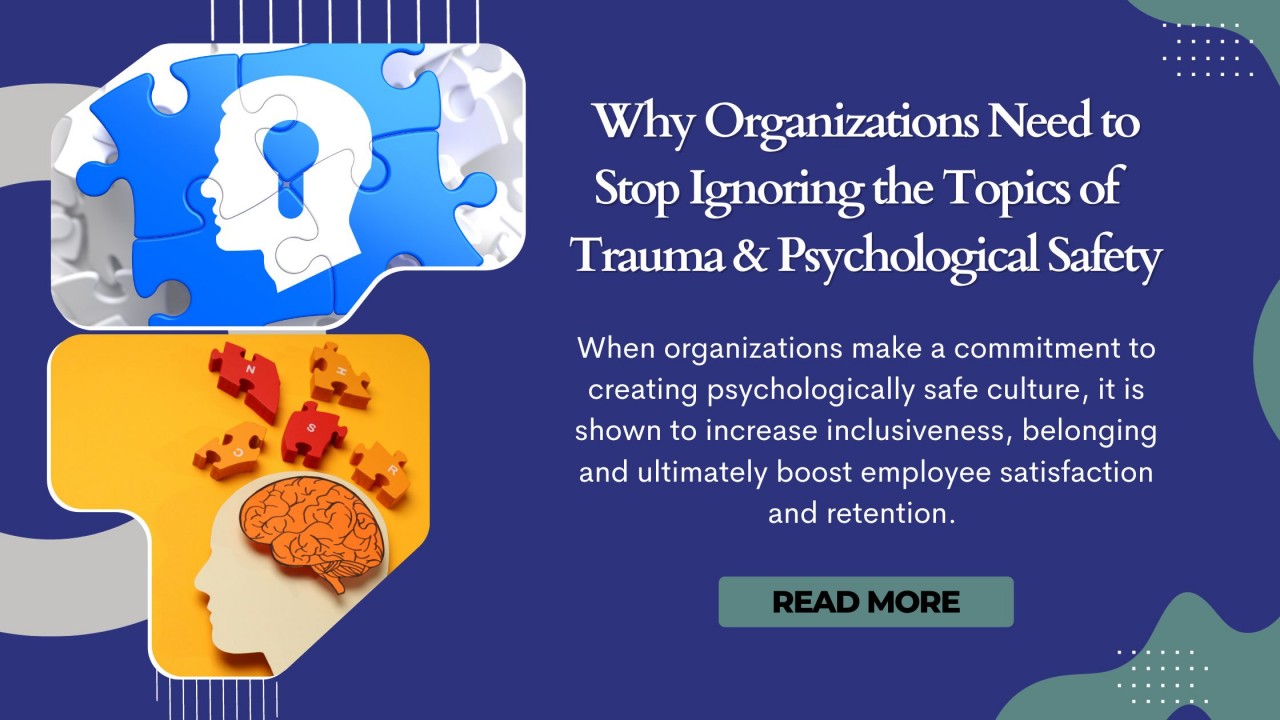(404) 793-0011 | drmaiysha@drmaiysha.com
Why Organizations Need to Stop Ignoring the Topics of Trauma & Psychological Safety
If you can't see how trauma is showing up in your organization...between and staff, in day-to-day interactions with clients, in the communications with and between various identities, then your organization and leaders are operating in a major blind spot that is destroying the psychological safety of your culture and costing you productivity, creativity, workability, retention of your best talent, and yes... Money!
People think they can just compartmentalize away their trauma. "Leave your feelings at the door" they say. The truth is, compartmentalization is limited because trauma can seep through and infiltrate every area of life.
And here's the thing, It's not only the big events that have an impact. It's also the repetitive, ongoing, inescapable toxicities of culture that erode trust, alter our sense of safety, and suppress our self-expression.
Whether experienced because of adverse childhood experiences, unhealthy relationships, toxic educational culture, or ongoing stressors in the home, or at work, trauma is trauma... and trauma begets trauma...
When you are not equipped with the lens and listening of trauma, and the skills to know how to respond once you recognize it as such, you set yourself up to potentially exacerbate your own stress, and potentially cause harm to others.
Creating psychological safety is not just a trend. It is a valuable commitment to expanding emotional intelligence, acquiring the skills of trauma informed communication, mitigating harmful trauma on trauma communication, and create a shared environment for healing and growth.
When organizations make a commitment to creating psychologically safe culture, it is shown to increase inclusiveness, belonging and ultimately boost employee satisfaction and retention. With satisfied employees comes increase productivity, creativity, and growth of the organization in multiple dimensions.
Oh, and by the way... it's the senior leaders who set the culture. So, the work starts with you. You may see this as a small defect in the organization, but if you ride on a tire with a nail in it long enough, it will either deflate or blow out...and usually at the inconvenient or dangerous of times.
Don't deflate or blow out your organization... repair it.
Learn more about Dr. Maiysha's consulting and training. Bring the tools of trauma informed listening and speaking into your organization and create psychological safety for your leaders and staff. Increase productivity, employee satisfaction and retention. Contact us today and schedule a call with Dr. Maiysha to learn how we can improve your workplace culture. https://mindremappingacademy.com/corporate-programs
Expand your listening capacity. Take our trauma informed communication course. Click here to learn more and register: https://mindremappingacademy.com/courses/ticc/
Stay Informed
When you subscribe to the blog, we will send you an e-mail when there are new updates on the site so you wouldn't miss them.





Comments